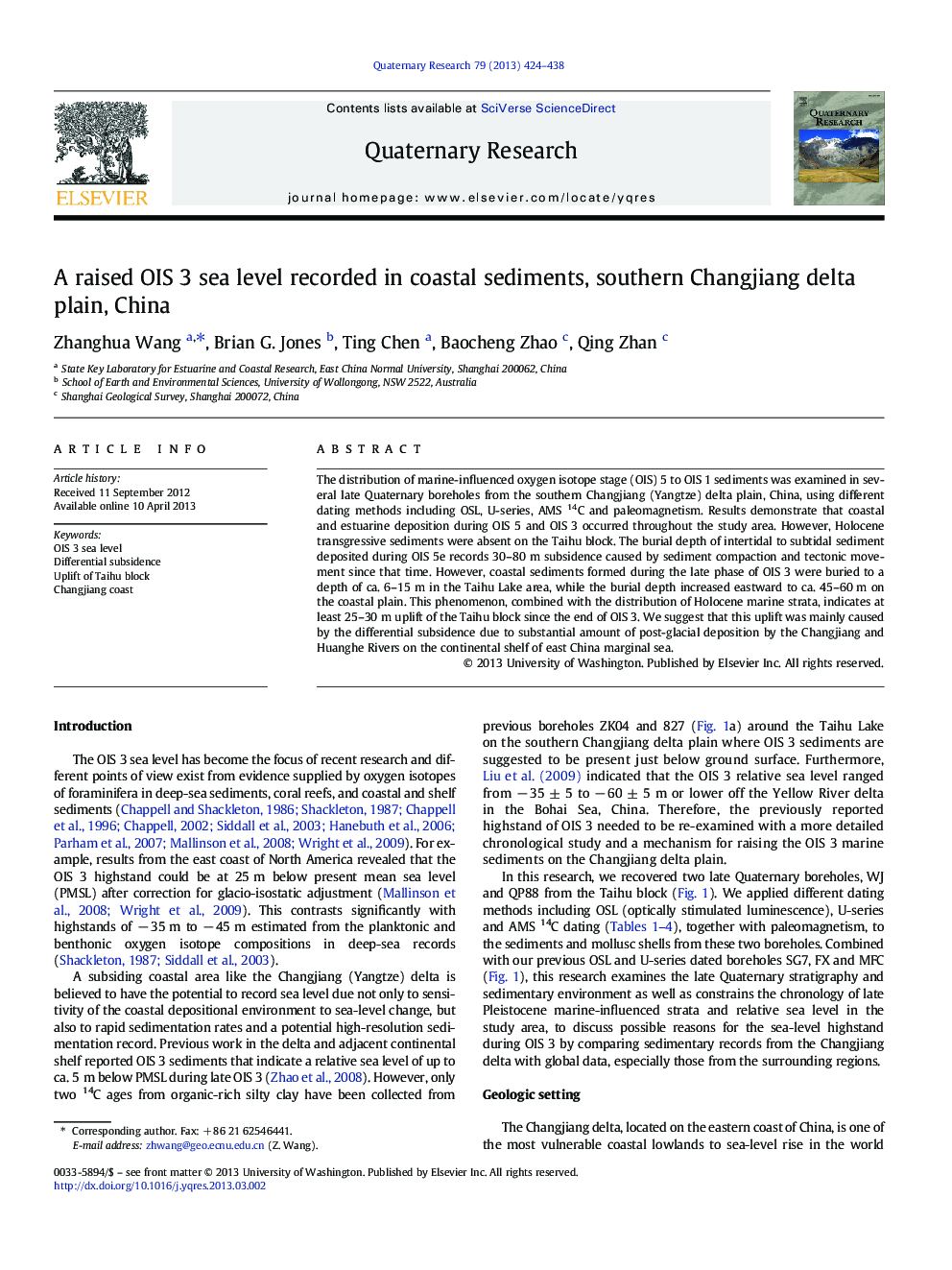| Article ID | Journal | Published Year | Pages | File Type |
|---|---|---|---|---|
| 1045389 | Quaternary Research | 2013 | 15 Pages |
The distribution of marine-influenced oxygen isotope stage (OIS) 5 to OIS 1 sediments was examined in several late Quaternary boreholes from the southern Changjiang (Yangtze) delta plain, China, using different dating methods including OSL, U-series, AMS 14C and paleomagnetism. Results demonstrate that coastal and estuarine deposition during OIS 5 and OIS 3 occurred throughout the study area. However, Holocene transgressive sediments were absent on the Taihu block. The burial depth of intertidal to subtidal sediment deposited during OIS 5e records 30–80 m subsidence caused by sediment compaction and tectonic movement since that time. However, coastal sediments formed during the late phase of OIS 3 were buried to a depth of ca. 6–15 m in the Taihu Lake area, while the burial depth increased eastward to ca. 45–60 m on the coastal plain. This phenomenon, combined with the distribution of Holocene marine strata, indicates at least 25–30 m uplift of the Taihu block since the end of OIS 3. We suggest that this uplift was mainly caused by the differential subsidence due to substantial amount of post-glacial deposition by the Changjiang and Huanghe Rivers on the continental shelf of east China marginal sea.
